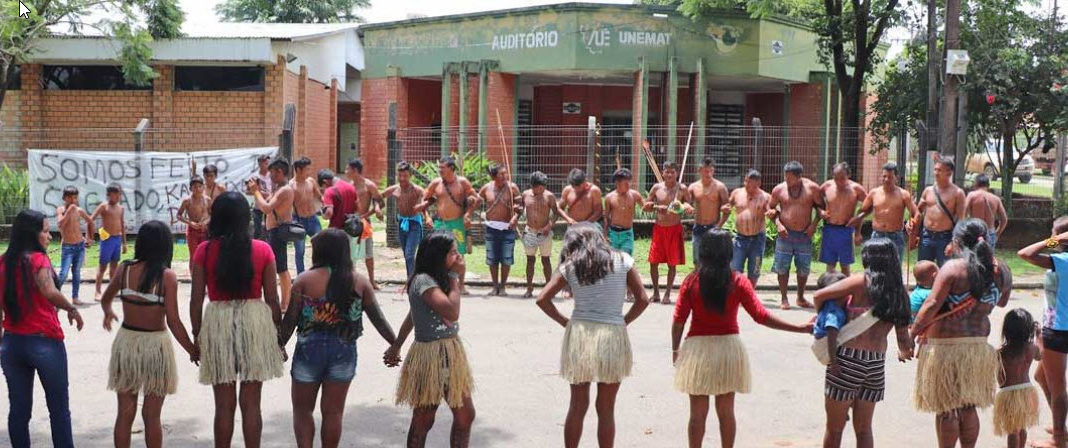- In 2013, during the building of the Teles Pires dam in the Brazilian Amazon, the Teles Pires Hydroelectric Company (CHTP) dynamited Karobixexe (Seven Rapids), a sacred site of the Munduruku, Apiaká and Kayabi peoples. Located just outside an indigenous reserve, it received no government protection.
- Also during construction, the firm removed funeral urns from a sacred site without indigenous permission and refused to return them. In December, 70 Munduruku occupied the Natural History Museum in Alta Floresta in Mato Grosso state, and took back the 12 funeral urns, plus other of their artifacts.
- The construction of the Teles Pires dam and destruction of Karobixexe both occurred without prior consultation of the Mundurku as required under law according to the International Labour Organization’s Convention 169, of which Brazil is a signatory.
- Other human remains were found by CHTP and 270,000 artifacts were removed to which the Munduruku now have no access. They have also been barred from another sacred site, Dekoka’a (Monkey Hill) impacted by the construction of the São Manoel Hydroelectric Power Station, also located on the Teles Pires River.
This article was first published by Mongabay on 20 January 2020. You can read the original here.
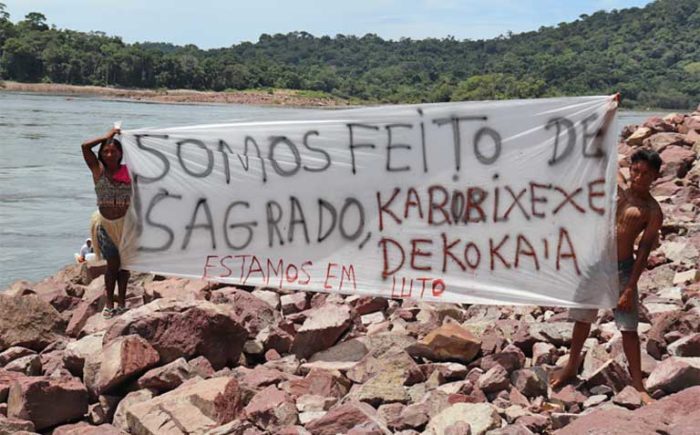
ALTA FLORESTA, Mato Grosso state, Brazil — On Christmas Eve 2019, 70 Munduruku indigenous people occupied the Natural History Museum in Alta Floresta and seized 12 funeral urns (Itiğ’a in Munduruku) and other artifacts removed from a sacred site during the building of an Amazon hydroelectric dam on the Teles Pires River, a tributary of the Tapajós River.
Considered by many as one of the most egregious assaults on indigenous culture in Brazil in recent years, the building of the Teles Pires dam in 2013 destroyed Karobixexe (Seven Rapids), a sacred site for the Munduruku, Apiaká and Kayabi peoples; it was located just outside a demarcated indigenous reserve, so received no government protection. Korobixexe is extraordinarily important for the Munduruku, as they regard it as a spiritual realm inhabited by both human souls after death and also by supernatural beings, such as the “Mother of Fishes,” responsible for all fish reproduction in the Teles Pires River.
According to Krixi Biwün, a woman warrior and sage, who lives in Teles Pires village, the dynamiting of the site meant the end of the Munduruku. “We will come to an end, if our spirits disappear, “she said. It is double annihilation, in life and in death.
Though the building of the Tele Pires dam had serious impacts on their way of life, their territory and their spiritual practices, the Munduruku were not consulted prior to the project’s construction, as they should have been under law, according to the International Labour Organization’s Convention 169, of which Brazil is a signatory.
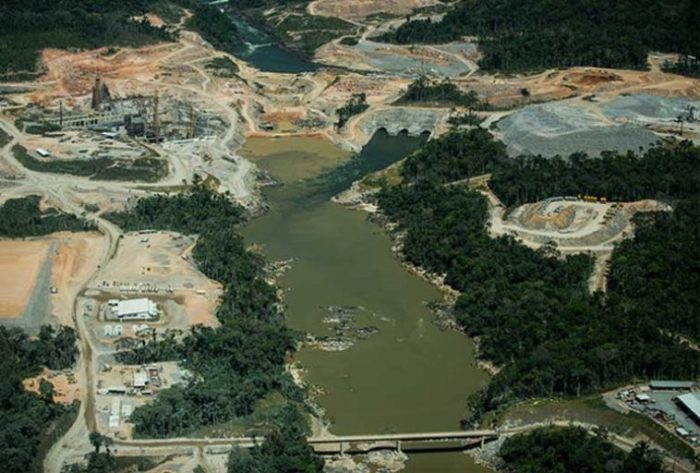
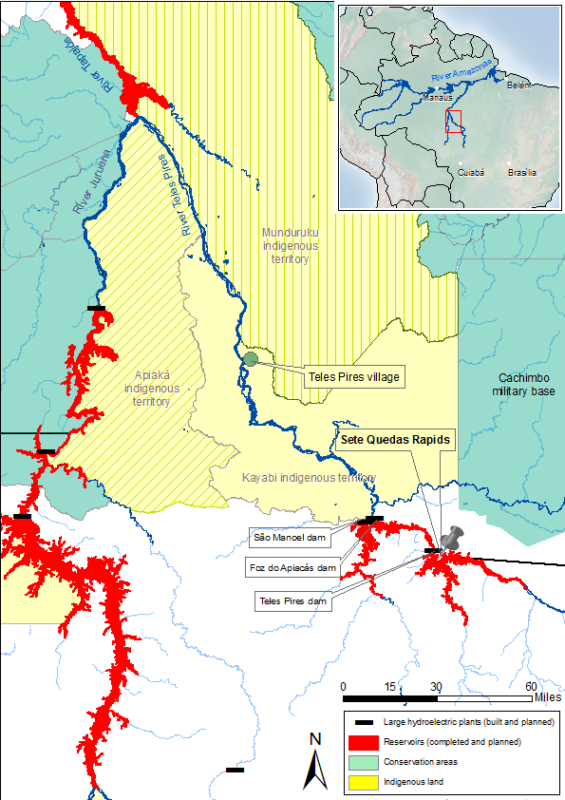
In December 2016, a Brazilian judge recognized the validity of what the Indians had said all along: that they should have been allowed a “prior, free and informed” consultation before the dam was given the go-ahead. As a result, the court ruled “invalid” the dam license issued by IBAMA, Brazil’s environment agency, in 2010. But by the time of this decision, the dam was already in commercial operation so the court’s decision had no practical impact.
However, the impacts for the Munduruku have been devastating. A 2016 oil spill near the under construction São Manoel hydropower dam seriously affected indigenous communities on the Tele Pires River. Indigenous leader Taravi Kayabi described the spill’s effect: “All this is a terrible sadness for our people. This region is sacred to us. Now, along with the land being flooded [due to the dam], they´ve dirtied our water. The fish have disappeared, too. People are getting sick with diarrhea. Everyone is worried about their health.” Also since the destruction of Karobixexe and the removal of the urns, the Munduruku have reported a number of tragic incidents, including the death in 2019 of two indigenous women hit by lightning, as well the disappearance of various animals they used to hunt and of some species of fish.
Determined to protect their people from further violent deaths, disasters and mishaps, the shamans decided they must retrieve the urns and bring them to an undisclosed protected place as indicated by the ancestors. “We can’t leave the spirits any longer there [in the museum]. They are complaining of the cold and the town, and they’re carrying out acts of vengeance, as we are not protecting them,” explained a shaman.
“The pariwat (non-Indians) are asking us to respect their Christmas and wait,” he went on. “But their religious celebrations should have taught them to respect our sacred sites… Until today we haven’t even received an apology,” for the dynamiting of Karobixexe and seizure of the urns.
Upon arrival of the Munduruku in Alta Floresta just before Christmas, Arthur Loiola, a representative of the Teles Pires Hydroelectric Company (CHTP), said that “unfortunately, CHTP cannot authorize the removal of the urns.” Loiola claimed that he needed permission from both IPHAN (the National Historic and Artistic Heritage Institute) and FUNAI (the National Indigenous Agency), even though both bodies had stated the indigenous people should be allowed to decide the final destiny of the urns.
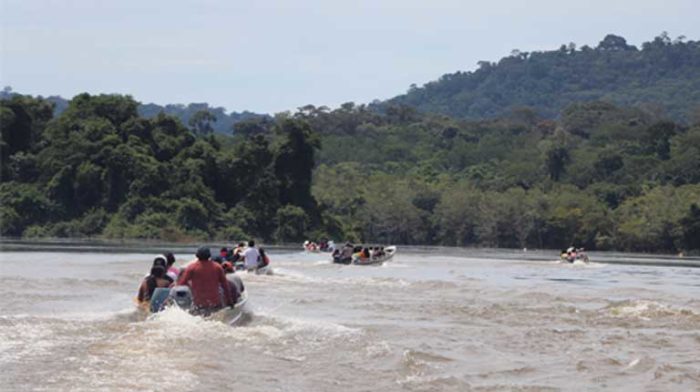
In 2017 the company had agreed, in principle, to transfer the urns to Munduruku territory. Despite that, the dispute dragged on, partly because, according to the shamans, they haven’t been allowed enough time in the museum to communicate with and understand the wishes of their ancestors.
On 25 December, the Munduruku decided that the moment had come for direct action. “During our visit [to the museum], the spirits demanded that the shamans free them [straightaway] and we all agreed to follow their command,” the Munduruku said in a statement on 30 December. “You [the company] never asked us if you could remove our spirits. Why should we wait for you to decide what you want to do?”
After the urns were reclaimed, IPHAN published a note reaffirming that it respected the right of the Munduruku to decide where the urns should be buried. After repeatedly trying to contact CHPT, Mongabay received an email from the company confirming that it had nothing to say on the matter.
Dozens of researchers and civil society bodies issued a statement saying that, after so many delays, the only option remaining to the Munduruku was to reclaim their relics. Bruna Rocha, a lecturer in archaeology at the Federal University of the West of Pará (UFOPA), told Mongabay that “The action of the Munduruku was not only legitimate but heroic, given they received no financial or logistic support [from any source] to carry it out.”
In an interview with Amazônia Real, the archaeologist Érika Gonzáles (owner of Documento, the company that originally removed the urns for CHTP), revealed that other human remains were found at the location. Once the archaeological team realized it was intruding on an indigenous site, she said, they decided to protect the artifacts. Some 270,000 pieces were ultimately removed. They are now locked up in areas controlled by the company or in museums in Cuiabá to which the Munduruku have no access.
The Munduruku have been barred from another sacred site — Dekoka’a or Monkey Hill. That location was severely impacted by the construction of the São Manoel Hydroelectric Power Station, also located on the Teles Pires River. When the Indians went to the site in September 2017, the National Public Security Force, a special police unit controlled directly by the Presidency, kept them away with tear gas bombs.
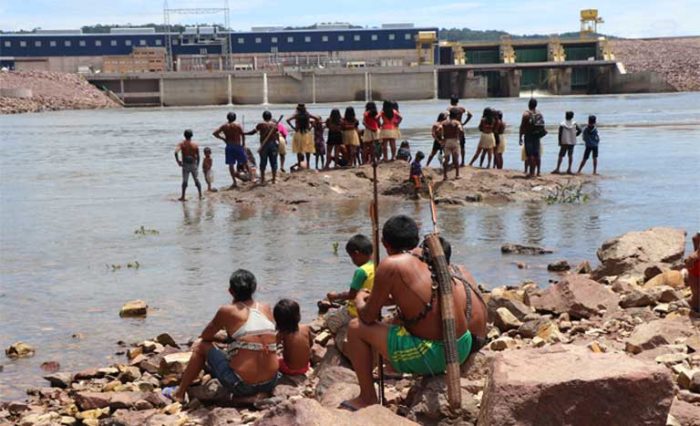
A short while later, the São Manoel Energy Company obtained a judicial ruling banning all demonstrations and any attempt by indigenous people to block energy company staff from entering the São Manoel property. “It is absurd to consider us invaders when the land is ours,” responded one indigenous leader, who chose not to give his name.
Questioned by Mongabay about this conflict, the energy company said that high-tension electrical equipment at the dam site posed a security risk, and the ban was aimed at protecting the safety of all concerned. The company did not say why they are continuing to hold the sacred objects.
Indigenous people are sceptical of the company’s explanation, seeing the ban instead as an attempt at intimidation. They also report that during their five-day river trip to Alta Floresta just before Christmas, they were monitored constantly by planes sent overhead by the two hydroelectric companies.
It is believed that the Munduruku’s Christmas Day museum action may be the first ever initiative anywhere ever conducted by an indigenous group to recover their own sacred artifacts through direct action.
- This story was produced with additional reporting by Thaïs Borges.
Banner image caption: Munduruku assembled in front of the Museum in Alta Floresta, 23 December 2019. Image by Rosamaria Loures.

